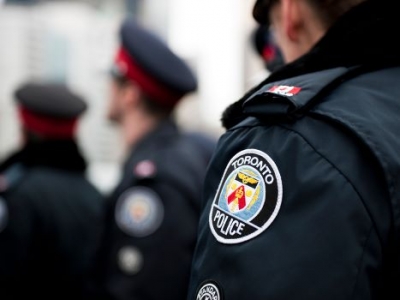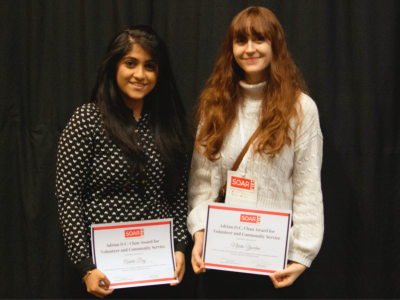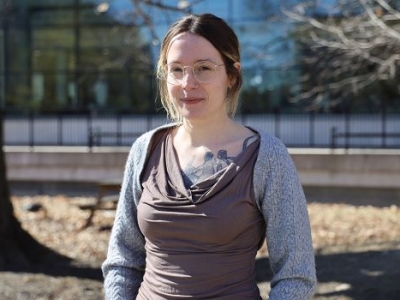Four graduate and 11 undergraduate journalism students headed North this summer to participate in a month-long experiential learning project called Stories North. This initiative was created by Prof. Kanina Holmes, who worked for both CBC radio and television out of Whitehorse between 1995 and 2003.
In a course outline, Holmes wrote: “In addition to gaining a broader and more nuanced understanding of this part of Canada, both past and present, Stories North also seeks guidance on one of the most pressing issues facing the country: how can we collectively explain, hold ourselves to account and shift away from the inequities and injustices and ignorance around Indigenous peoples?”

Kanina Holmes at Bennett Lake. Photo by Kait Labbate.
Master’s student Rachel Levy-McLaughlin said this experience, “will impact the way I tell not only sensitive stories, but all stories. There’s a lot of nuance missing from journalism, which tends to present things as black and white, especially when dealing with Indigenous issues. We’re talking about things people are dealing with every day. The best way to understand an issue is to see things in context.”
You can read Levy-McLaughlin’s story about fish and wildlife management by clicking here and this story about the Atlin music festival by clicking here.
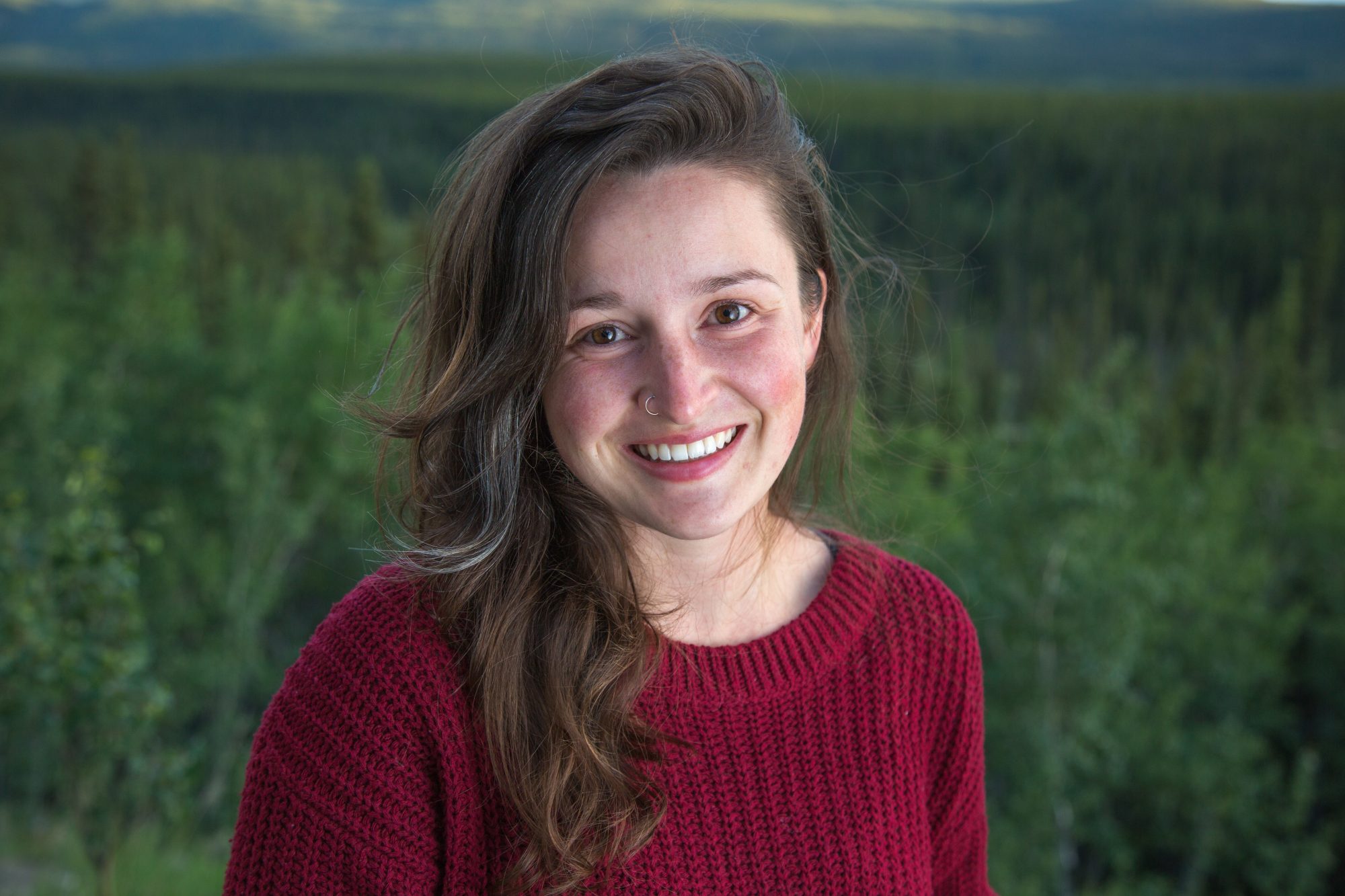
Master’s student Brieanna Charlebois says: “Without this course, I don’t think I would have been able to get this sort of education. I am glad that this was an opportunity to be had because I think it’s important to address the issues associated with our past, because they have led to these ways of thinking today.”
She continues: “My biggest takeaway was in the many personal stories that the people of the Yukon so willingly shared. I was able to learn about the tragedies—most of which were associated with Residential school experiences— but also about the healing processes and the triumphs.”
Charlebois and a fellow student did their final project on the different forms of healing—healing through art, through programs and through therapeutic and medicinal practices.” Click here to read and listen to their work.
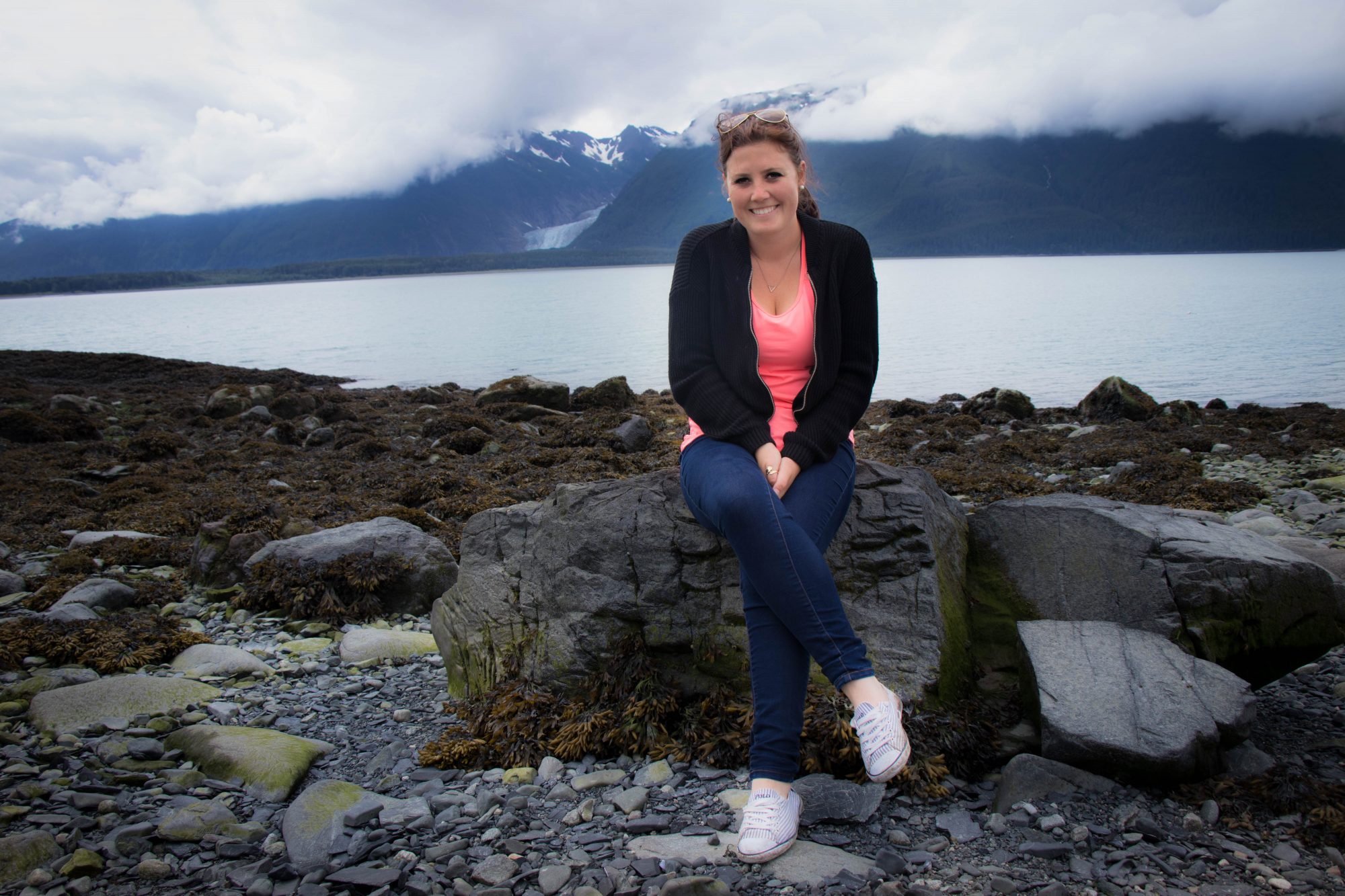
MJ student Sabrina Nemis says: “I’d say this experience made me see the history of Canada in a new way–a way that includes more people and perspectives and hopefully leaves room for more compassion. I also feel a responsibility to share what I’ve learned about Canada’s North and about First Nations–not just about their struggles, but about their tenacity and successes.” Click here to read four articles she wrote for Stories North.

Another MJ student Liam Harrap says that, due to Stories North, he will pay more attention to people around him. “The first step will be to get to know the people in my program and classes. Either invite them over for dinner or go out for coffee. Sometimes you find the best stories, right under your nose. The most interesting people, don’t always wear funny hats or have peculiar mustaches. Sometimes they look ordinary, drive bland cars and live in white houses. But maybe they’ve had an amazing past and were something like a bull fighter. You’ve just never bothered to ask. Stories North has reminded me how important building connections are. It may seem self-evident, but funnily sometimes we ignore the obvious. Click here to see a story that Harrap and another journalism student wrote about northern cooking as part of the project.

The students arrived in Whitehorse on June 20 and jumped right into a series of active learning sessions, including walk-n-talk mobile lectures, a blanket exercise conducted by a member of the Kwanlin Dün First Nation, attending National Aboriginal Day celebrations, participating in a public panel on Indigenous representation in Yukon co-organized by Journalists for Human Rights, a residential schools workshop led by local Indigenous leaders, and a canoe trip down the Yukon River.
This type of course, say Holmes, could become a model for new offerings in journalism and other disciplines. “There’s potential to apply this model in so many exciting directions,” she says. “Everything that has happened over the past three weeks tells me that there’s a need and desire for programs like this — and that we could and should do it again.
“Having students away from home makes a difference, especially when they’re in their early 20s, which is such a formative time. They’re pushed outside their comfort zones. These types of trips can change people’s lives. And we don’t always have to travel as far as the Yukon to do this.
“It’s immersive journalism and immersive learning,” adds Holmes, “but much of what has happened, I could categorize as magic.”
Grad student Charlebois says: “There are many moments that I had throughout my month in the Yukon that I probably will never put on paper, but will never be forgotten. And there was where I learned my biggest lesson. We all come to the table with different perspectives. It is our responsibility as journalists and simply as people, to listen to each other and try to understand. It is important to address biases but also believe in people’s truths and in the facts that many have forgotten or refuse to address.”
All of the Stories North articles are available on this web page. You can click here to read a story written by Carleton’s Dan Rubenstein about the project.
–With files from Dan Rubenstein
Tuesday, August 8, 2017 in Grad Student Research, News
Share: Twitter, Facebook


